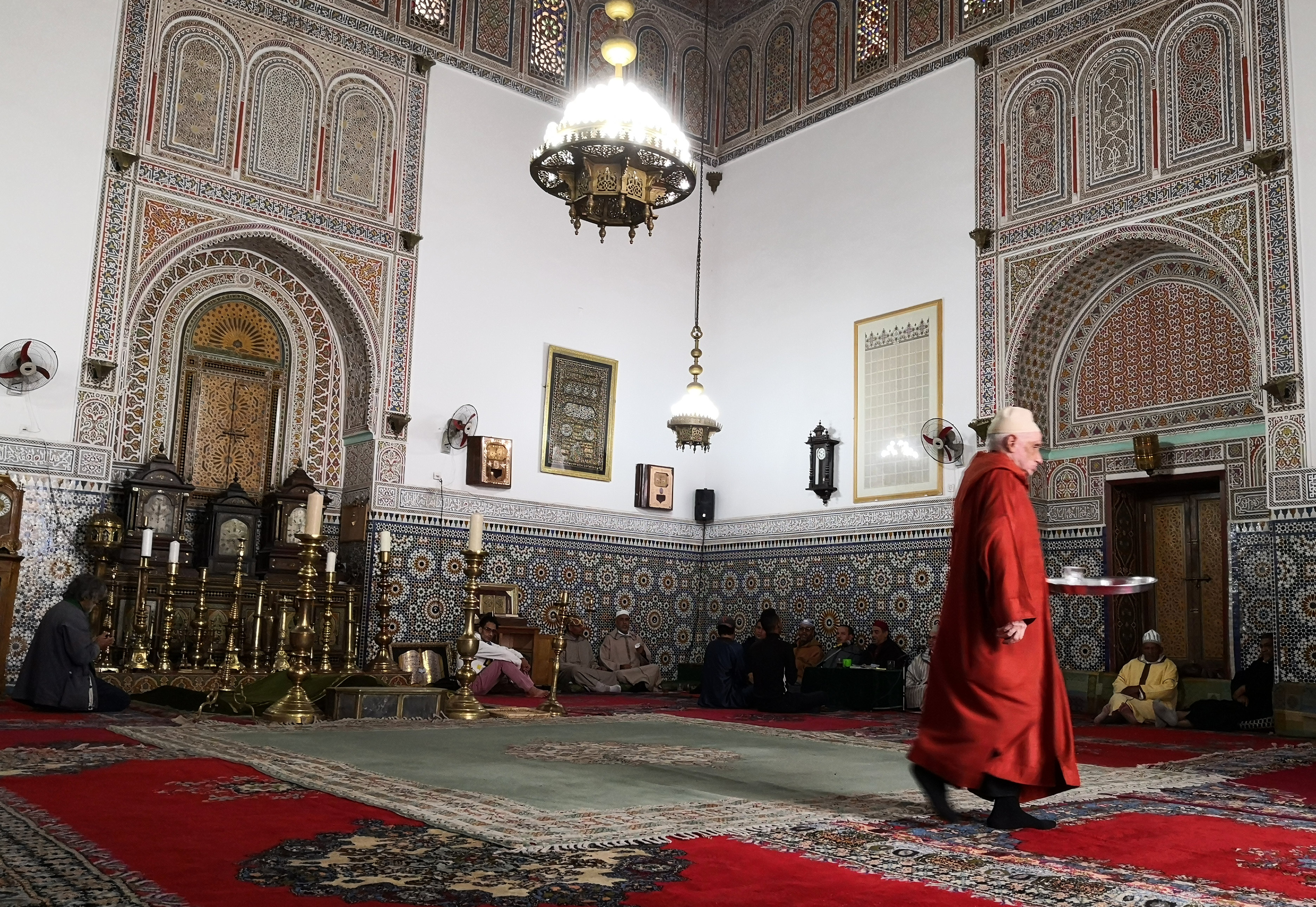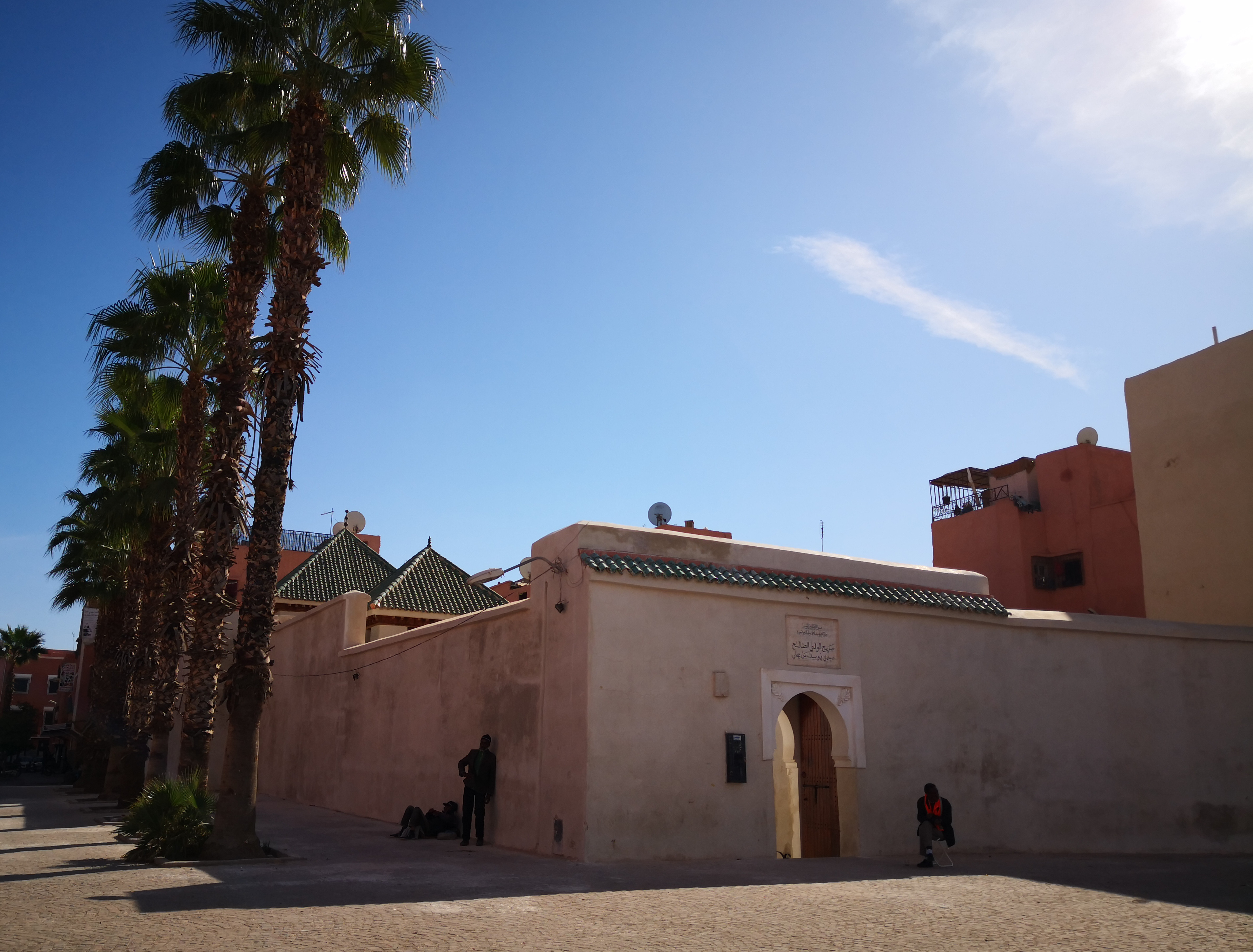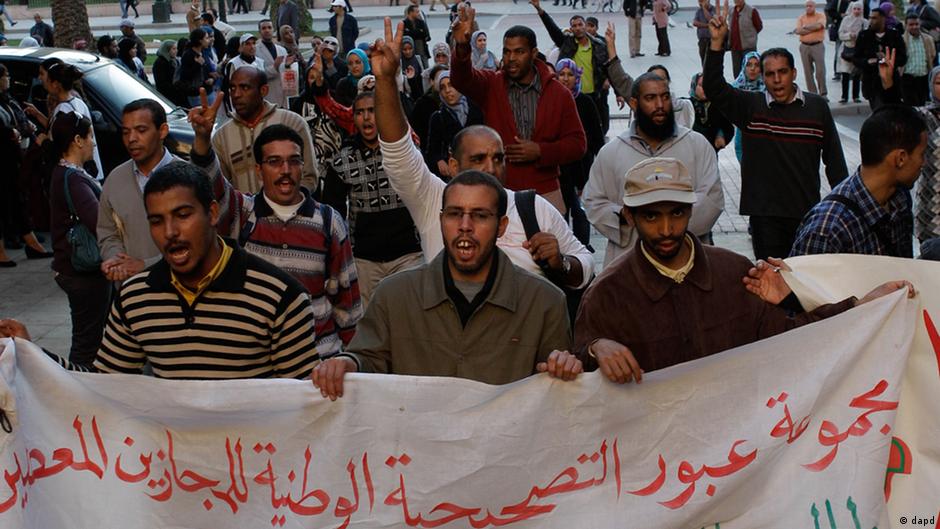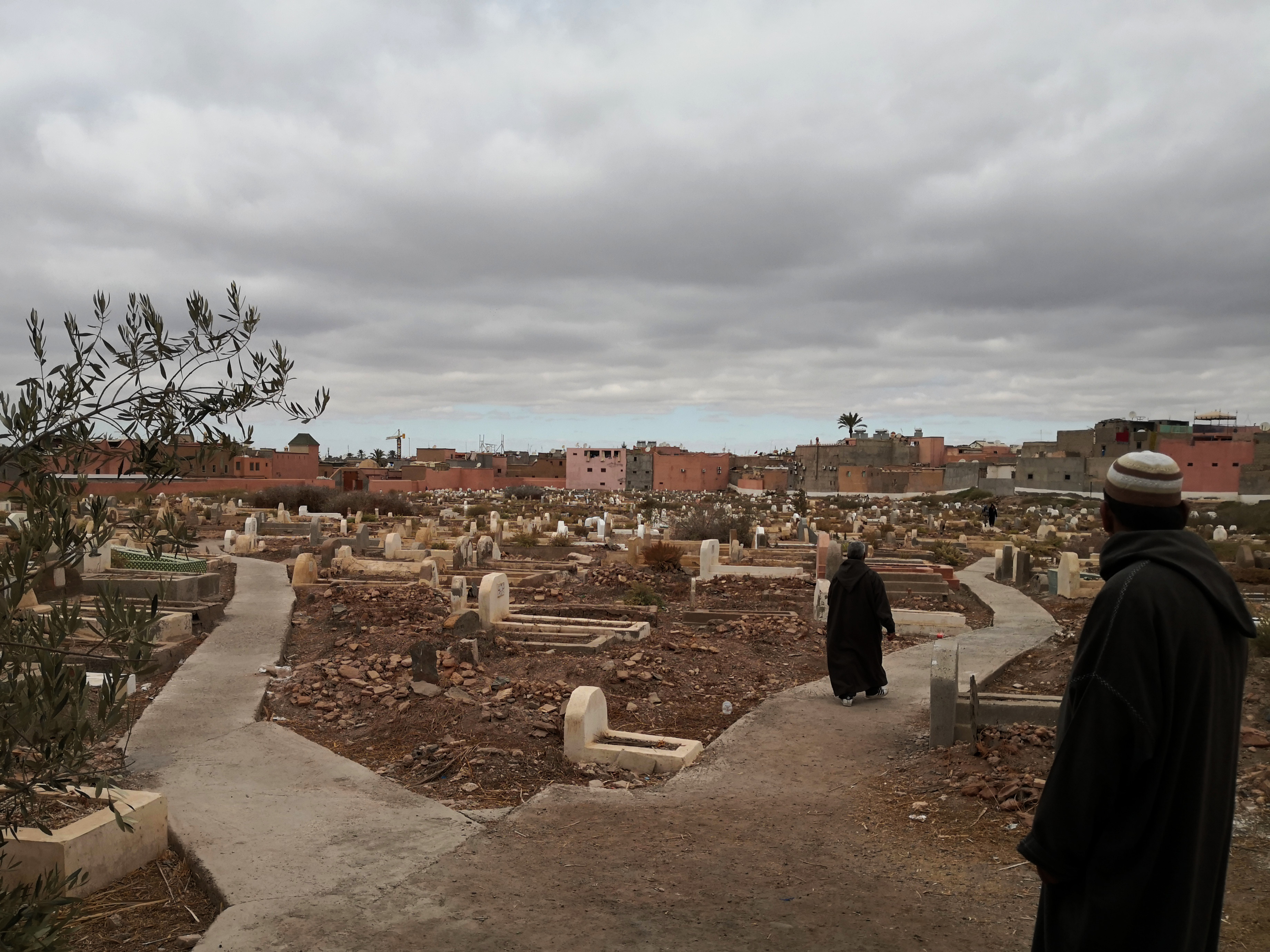A cure for extremism?

The name Marrakesh conjures up the bustling streets of the Medina, with their countless souvenir shops, cafes, and the famous Jama el-Fnaa, the sprawling market square with its jugglers, comedians and snake charmers. But alongside the Marrakesh that lives off tourism, there is a part of the city’s heritage that remains closed to holidaymakers.
Marrakesh is known as the city of the seven saints, which – according to Islamic tradition – are the spiritual glue that holds the city of a million inhabitants together. Each of these patron saints was a notable Islamic legal scholar, wise man or mystic from the Middle Ages. The Sufi shrines are scattered in and around Marrakesh’s old town, though it takes some skill to track them down in the labyrinth of the Medina.
The idea of linking the tombs to one another to form a ritual pilgrimage originated from Moulay Ismail, the second ruler of the Alaouite dynasty that rules Morocco to this day.
Moulay Ismail, who steered the country’s course from 1672-1727 and was known for ruling with an iron fist, wanted to strengthen the zawiyas, centres of the Sufi order, in order to restrict the influence of a competing pilgrimage tradition – that of the Regraga Berber tribe, which had its own pilgrimage route in the same region, around seven saints in the coastal city of Essaouira. Unlike the seven Regraga saints, the seven patron saints of Marrakesh were of Arab descent, like the royal house of the Alaouites.

Pilgrims to boost the economy
Moulay Ismail’s plan worked: Marrakesh gained spiritual significance and was soon attracting pilgrims from all over the country, helping to boost the city’s economy. Traditionally the pilgrimage, which follows a circular route based on the circling of the Kaaba, began on a Tuesday and finally ended on a Monday, with a visit to one saint on each of the intervening seven days. Although the original ritual form of this tradition is rarely practiced today, many of the mausoleums of these devout figures remain a magnet for visitors.
They include the shrine of Sidi Ben Slimane al-Jazouli, who lived in the 16th century and is known in the Maghreb and beyond for his Dala’il al-Khayrat, a collection of Islamic prayers. After much time travelling around the holy cities of Jerusalem, Medina and Mecca, al-Jazouli is said to have spent fourteen years living in isolation, and finally died as he was praying.
Another popular mausoleum is the tomb of Sidi Bel Abbes, a wise man from the 12th century, who spent some years living as an ascetic in a cave outside Marrakesh. At the invitation of the Sultan, he then moved into the city, where the ruler bestowed him with a madrassa for him to teach at and a hostel for his students.
The square courtyard inside the shrine complex of Sidi Bel Abbes can be reached via a covered alleyway shared by pedestrians and bicycles. On this particular morning, a group of men of various ages are sitting at prayer beneath the courtyard’s ochre-coloured arcades, with tasbihs, rosary-like strings of beads, sliding through their hands. Looking closer, it becomes obvious that all these men are blind. They live in a charitable institution that has been attached to the shrine for centuries, and goes all the way back to Sidi Bel Abbes himself, who is said to have had a particular concern for blind and partially sighted people.
As is typical of all sacred buildings in Morocco, the inside walls of the mausoleum are decorated with intricate mosaics of stars, circles and chequered designs in various geometric sequences and patterns of colour. This elegant interior architecture was designed to provide the visitor with an experience of paradise on earth as they entered the house of God.

Marabouts: the saints of Sufism
In just a few days, Marrakesh will be celebrating the festival of Mawlid. The festivities for the birth of Muhammad carry a high spiritual significance in Morocco, particularly among the Sufi orders. With their backs leaning against the mosaic wall, an ensemble of five men dressed in the jellaba, the traditional Moroccan hooded cloak, sing hymns of praise to the Prophet at a constant pitch.
An older gentleman wearing a bright red jellaba hurries across the carpet of the shrine and hands out glasses of steaming mint tea from a metal tray. New arrivals don’t have to wait long for their hot drinks – mint tea is the very essence of Moroccan hospitality. It is also a Sufi virtue to regard the guest as a manifestation of God and to wait on him accordingly.
Sufi brotherhoods began to form in Morocco in the 10th and 11th centuries. One of the country’s most influential religious figures was Abu al Hasan al-Shadili, the founder of the Shadhiliyya order, which retains a broad following in North Africa and parts of the Middle East to this day. The Tijaniyya is also very influential; it was founded by the Islamic scholar and reformer Ahmad al-Tijani, who is said to have had visions in which the Prophet Muhammad tasked him with creating a new order. Tijani’s tomb in the old town of Fez is still visited by pilgrims from West Africa. And Maraboutism, a kind of popular Sufism that has spread across Morocco and Tunisia, combines Islamic and shamanistic elements. It includes the visiting of local saints as well as dance rituals and music.
Morocco, however, also has a problem with extremism. This is directly connected to the high level of youth unemployment in the country, which stands at almost 40 percent in the cities. A lack of prospects drives young people into the hands of extremists, as it does in other parts of the Islamic world. And, like the attacker who drove into pedestrians at a Berlin Christmas market in 2016, and those behind the bloody massacre at the Bataclan theatre in Paris, the people who carry out attacks in the name of Islamic State are often of Moroccan descent.
Strategy against extremism
Fundamentalist movements such as Salafism and Wahhabism have been exerting an influence in Morocco for decades. Saudi Arabia has been propagating its Wahhabist ideology in North Africa since the 1970s, with the help of oil dollars; as a result, cheap propaganda material from the Islamists has got into the hands of generations of people who have no hope for the future. The series of al-Qaida attacks on cafes and hotels in Casablanca in 2003, in which 46 people died, was a turning point in how this problem was perceived in Morocco. The attackers were “home-grown”, which in turn showed up the country’s economic failings – almost all of them came from the deprived Sidi Moumen slum on the outskirts of Casablanca.

Since these attacks, Morocco’s king, Mohammed VI – who was then in the fourth year of his reign – has taken up the cause of fighting extremism. Alongside his political role, Mohammed VI is also the country’s religious leader, the “leader of the faithful”. His programme of reforms includes the promotion of Sufi movements and moderate Islamic thinkers, who are viewed as a means of treating the spread of fanaticism – a perspective that U.S. strategists have also repeatedly endorsed since 9/11.
This perspective does, however, ignore the fact that Sufism – although organised into various orders – is first and foremost a path of individual character-building. Using it for political ends is therefore problematic, even though the history of Sufism in the Maghreb has featured some political movements that originated in Sufi orders, such as that of Emir Abdelkader, who fought and won against the French occupiers.
Following the Casablanca attacks, Mohammed VI went on to appoint an academic with a Sufi background as Minister for Islamic Affairs. “Sufism is an important component of Moroccan culture; it’s more social than theoretical,” Ahmed Toufiq is quoted as saying in a profile of him. “I grew up amid mystics and storytellers, who stressed social cohesion and empathy, healing and kindness to our fellow man.”
Toufiq, the Minister for Islamic Affairs, feels a connection to the Boutchichiyya brotherhood, an order with its roots in the 18th century. He was the head of the National Library in Rabat and has taught Sufism at Harvard. In 2014 he helped to create the Mohammed VI Institute for the Training of Imams, which was visited by Pope Francis on his trip to Morocco in 2019.
The spirit of Sufism has thus been one of the guiding hands on the rudder of Morocco’s government for years. In the words of Toufiq’s spiritual master Sidi Jamal al-Qadiri, the religious head of the Boutchichiyya, which has its headquarters in the north-east of the country, Islamic mysticism may be defined in these terms: “Sufism is serious Islam. It is the heart and the fundamental core, the marrow of Islam. It is the station of excellence, purification, sincerity and devotion in all actions and works.”
© Qantara.de 2022
Translated from the German by Ruth Martin